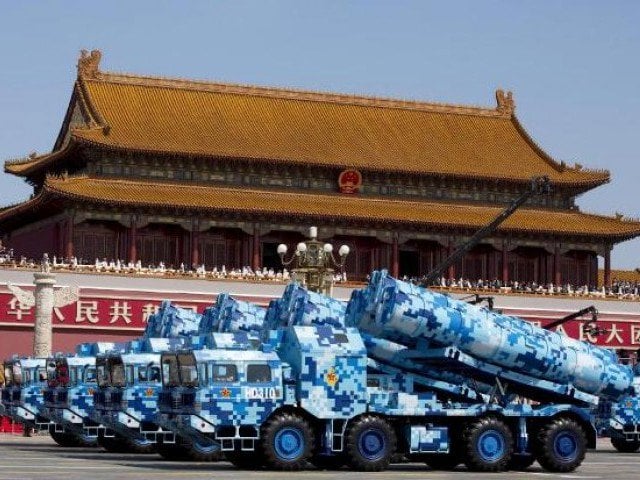
Many of the missiles in Beijing's arsenal now rival or outperform those of the United States, puncturing the protective umbrella that for decades America has afforded its regional allies South Korea, Japan and Taiwan.
Captain James Fanell, a former US Navy intelligence chief, told Reuters that China now has "the most advanced ballistic missile force in the world" and has "the capacity to overwhelm the defensive systems we are pursuing."
Critically, China has forged a monopoly in one class of conventional missiles that enable it to strike at US aircraft carriers off its coast and at bases in Japan or even Guam in the Pacific Ocean.
Under a Cold War-era treaty between the US and Russia, neither country has been allowed to develop these weapons - land-based, intermediate-range ballistic and cruise missiles with a range between 500 and 5,500 kilometers (3,418 miles). But China, which isn't a signatory to the treaty, has been deploying these rockets in massive numbers.
In the event of a confrontation in the seas off its coast,
Chinese military brass say they now have the means with which to
keep American carriers at bay. "We cannot defeat the United
States at sea," a retired PLA colonel told Reuters. "But we have
missiles that specifically target aircraft carriers to stop them
from approaching our territorial waters if there were conflict."
That is a potentially dramatic development, signaling that China is able to deter US intervention as it expands its control in the South China Sea, steps up naval and air sorties around Taiwan, and extends its operations into areas it disputes with Japan.
With the United States suddenly finding itself on the wrong side of the missile gap, American military planners face a new and daunting scenario. Because some of China's anti-ship missiles now outrange the fighter jets aboard US carriers, they could neutralise American flattops in a conflict. If these carriers are forced to operate outside the range of their aircraft, they would be far less potent.
The United States, which has long been preoccupied with wars in the Middle East and Afghanistan, is now rushing to claw back the advantage. President Trump announced on February 1 that Washington would withdraw from its missile treaty with Russia in six months, clearing the way for the US to begin building the ground-launched missiles banned for more than three decades.
China's Ministry of National Defense, the US Indo-Pacific Command and the Pentagon did not respond to questions from Reuters.







































COMMENTS
Comments are moderated and generally will be posted if they are on-topic and not abusive.
For more information, please see our Comments FAQ